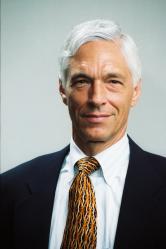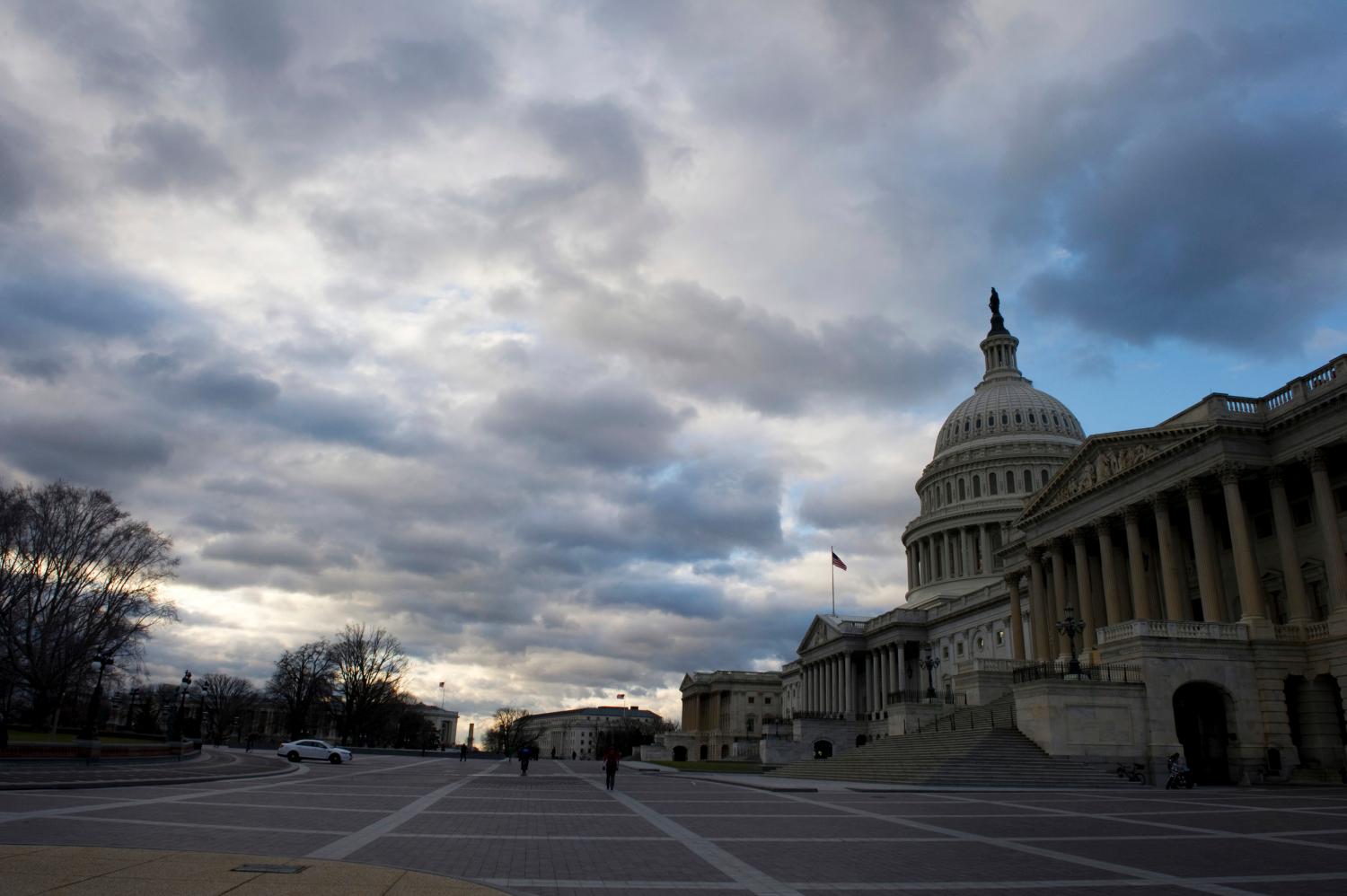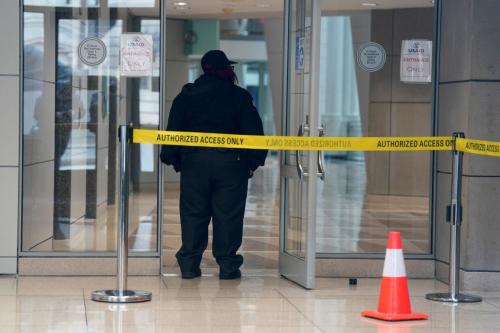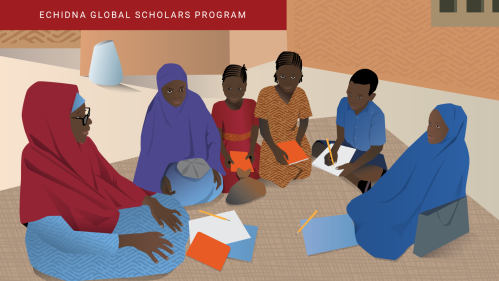The Peace Corps is one of the smallest instruments in the foreign policy toolkit of the United States. It is a “boutique” agency with a superb reputation. The Bush administration has proposed doubling the number of Peace Corps volunteers working in developing countries to 14,000 by 2007, still below the 1966 peak of over 15,000 volunteers.
Bipartisan support for the Peace Corps is strong and its cost is miniscule. Thus this expansion seems unambitious relative to the magnitude of the task of building a more stable and prosperous world. But a sharp increase in the number of volunteers in the next several years may not be feasible. Countries such as Brazil and India, which could absorb large numbers of Peace Corps volunteers, may resist. Recruiting enough qualified volunteers could be difficult under the current conditions of service.
The basic choice is between preserving the Peace Corps as a boutique agency with a popular mission or redefining the mission in a way that will attract more interest among host countries and appeal to a broader spectrum of talented Americans.
POLICY BRIEF #127
The Peace Corps was born during the cold war. Created to win hearts and minds in the non-aligned developing countries, its biggest impact, ironically, has probably been at home in the United States.
Nation-building was the main objective of the new agency when the first Peace Corps volunteers arrived in Ghana in August 1961. In retrospect, the complexities of nation-building were seriously underestimated. The impact of the Peace Corps on progress in developing countries over the past forty years has been too small to measure partly because of these complexities, but mostly because of the limited scale of its operations. Built up rapidly to a level of more than 15,000 volunteers in the field in 1966, the Peace Corps shrank during the 1970s and remained below 5,000 volunteers for most of the 1980s. A resurgence of demand for volunteers occurred following the end of the cold war, especially from countries in Eastern Europe and the former Soviet Union that were moving from communism to free market economies. A remarkable bipartisan consensus in favor of expanding service opportunities for Americans brought the Peace Corps to the current level of 8,000 volunteers.
The Peace Corps has adjusted continuously to changing realities in the field and at home. The pace of change remains relentless, however. For example, high-speed, high-quality communications, unimagined when the Peace Corps was founded, have created a global village where images of the collapsing World Trade Center on September 11, 2001, were seen by a high percentage of the world’s 6 billion inhabitants before the sun set in New York the same day. Since then the fight against terrorism has been at the top of America’s foreign policy agenda, and all existing policy instruments have been redirected to bolster this struggle.
For the Peace Corps, President Bush has proposed increasing the number of volunteers to 14,000. Doubling or even tripling the number, however, is not likely to make a perceptible difference. The question for policymakers is whether placing a substantially larger number of talented Americans in communities in less privileged countries could make a difference.
THE DOMESTIC CONTEXT
The Peace Corps is a small piece of a vast mosaic of public service, national service, and volunteer service.
Public service encompasses all of the employees of federal, state, and local governments and their related boards, agencies, and corporations. All are funded by taxes on the citizenry. Peace Corps volunteers are public servants because the enabling legislation accords them the status of federal employees.
National service is equated in the public mind with military service, not with service as a Peace Corps volunteer. To an increasing degree, however, American soldiers are being deployed in developing countries rather than in the advanced countries of Europe, the main battlefield over the past century. Thus the differences are no longer as great.
Volunteer service is broader and more complex. The Department of Labor has estimated that one in four American adults (almost 60 million out of 220 million over the age of 16) participated in voluntary service activities in community organizations in 2001-2002. The vast majority are unpaid volunteers.
President Bush created the USA Freedom Corps in 2002 as a central point for mobilizing Americans interested in voluntary service in support of national goals. A “Coordinating Council” chaired by the president provides policy guidance for the main federal service programs in existence: the Peace Corps, AmeriCorps, Senior Corps, and Learn and Serve America. In September 2003, President Bush signed an executive order inaugurating the Volunteers for Prosperity Initiative, which matches skilled Americans with volunteer opportunities overseas related to five federally supported programs, including the Emergency Plan for HIV/AIDS Relief.
In the context of the whole federal budget, the Peace Corps budget is almost invisible: $359 million. This amount represents two one-hundredths of one percent of the $1.8 trillion (outlays basis) requested by President Bush for FY2004, or 1.5 percent of the International Affairs budget. Due to the intense pressure to contain spending for all domestic and foreign programs, the odds are against the Peace Corps receiving its full budget request from Congress. By contrast, the National Defense budget request added up to $400 billion, including personnel expenditures of $99 billion.
The Peace Corps is one of the least expensive instruments being used to advance U.S. foreign policy objectives. A volunteer in the field earns $2,700 per year in the form of a readjustment allowance. Base pay for an Army private is $15,480 per year (E2) and for a second lieutenant is $26,208 per year (O1). Base pay for Foreign Service and Agency for International Development employees is even higher.
THE INTERNATIONAL CONTEXT
When the Peace Corps was founded, the cold war struggle to contain communism was the dominant foreign policy goal of the U.S. government. The strategic nuclear attack force was the foremost instrument developed for this purpose. Armed intervention, notably in Korea and Vietnam, also played a critical role.
At the same time, the United States deployed an array of soft instruments—including bilateral aid administered by the Agency for International Development and multilateral aid from the World Bank and the regional development banks—to win the hearts and minds of the majority of the globe’s population that lived in the non-aligned Third World countries.
Despite the skepticism of most Americans about the effectiveness of foreign aid as the twenty-first century began, the economic progress achieved by developing countries in the previous fifty years has been remarkable. Increases in life expectancy, adult literacy, and other social yardsticks have been impressive by historical standards. Partly as a consequence of this progress, flows of development assistance declined as countries such as Brazil and Korea graduated from aid and gained access to international capital markets.
The terrorist attacks on September 11, 2001, transformed the foreign policy agenda of the United States. Fighting terrorism became the overwhelming priority. Foreign aid programs that had been focused on alleviating poverty have been redirected to weaken the sources of support for terrorists.
A recent Brookings study, Agenda for the Nation, refers to American military power as a kind of “glue” for global security and stability. At the same time, more of the developing world views this power resentfully as a means of extending American economic and cultural domination. By contrast, the Peace Corps is one of the few forms of engagement offered by the U.S. government that is eagerly embraced by developing countries. This is arguably a sufficient reason for expanding it.
Fortunately, the United States is not alone in tackling terrorism, poverty, and nation-building. All of the developed democracies are committing a larger share of their GDP to development assistance than the United States does. The specialized agencies of the United Nations, including the World Bank and the World Health Organization, have sizeable operations. As many as twenty other countries have government-supported programs for putting volunteers to work at the grassroots level in developing countries. More than one hundred nongovernmental organizations (NGOs) based in high-income countries are supporting volunteers involved in every aspect of nation-building and poverty reduction.
Key Issues
Are the original goals still relevant?
Goal #1: Providing trained manpower.
Over the past forty years, virtually all developing countries have established education systems that produce well-prepared university graduates. All have sent students to the United States and elsewhere who have met the high standards of professional schools and have successfully competed in the global marketplace. Yet the United States remains the world’s leading source of new technologies and new ideas. Hosting Peace Corps volunteers is a cost-effective way for developing countries to have early access to the cutting edge of modern life, including mastery of the English language. On balance, with the exception of Sub-Saharan Africa, the first goal appears to remain valid but has lost some of its urgency.
Goal #2: Promoting understanding of Americans among people in developing countries.
The United States is far better equipped than other countries to use hard instruments to fight global threats such as terrorism. The task will be easier to the extent that people in developing countries appreciate what Americans are doing. At the moment, the United States faces considerable skepticism. Public diplomacy may not be sufficient to turn the tide. Personal relationships have always been the best way to promote American ideals. Fostering these relationships has been the greatest success of the Peace Corps. The second goal, making friends, appears to have even greater urgency today than forty years ago.
Goal #3: Promoting understanding among Americans of people in developing countries.
The Peace Corps agency may not be the best instrument for advancing this goal because it competes with the primary mission of placing qualified volunteers in communities abroad. An obvious alternative exists: the National Peace Corps Association (NPCA), which represents returned volunteers. The Peace Corps is now providing a small amount of funding to NPCA for activities related to the third goal. If the NPCA is successful in beefing up its membership it will be in a position to take on even more responsibility in this area.
After September 11, the Peace Corps’ first director, Sargent Shriver, suggested adding a fourth goal. Congressman Sam Farr (D-Calif.), a returned volunteer, subsequently offered the following formulation: “to help promote global acceptance of the principles of international peace and non-violent coexistence among peoples of diverse cultures and systems of government.” The intent is to articulate a goal that would more effectively counter the perception that the United States is seeking to extend its dominant position in the world at the expense of other countries and cultures. The Peace Corps is uniquely positioned to deliver this message. A fresh vision could both invigorate the Peace Corps and enhance our national security.
Is institutional independence important?
Created as an independent agency, the Peace Corps was merged with domestic volunteer programs into a new agency, ACTION, in 1971, but regained full independence in 1982.
Peace Corps independence is now a sacred cow. Supporters consider independence as essential to ensuring that the Peace Corps will not be used to advance the short-term goals of whatever administration is in power. They also argue that it will remain critical to maintaining the trust and respect of the countries in which the Peace Corps operates.
Yet independence is partly a myth. As long as the Peace Corps is a federal agency with a budget proposed by the president and appropriated by Congress, partisan agendas will be reflected in Peace Corps operations. One obvious impact is on the size of its budget. Another impact is in the selection of the head of the agency, who by statute is nominated by the president and confirmed by the Senate.
The Peace Corps does not appear to be at risk of losing its independence now. The issue instead is whether the preoccupation with independence gets in the way of achieving broader objectives. Some loss of independence might be necessary to build a program that could have a bigger impact on making the world a safer and more enjoyable place for all people.
Other institutional arrangements could conceivably enhance Peace Corps independence without diminishing effectiveness. For example, Congress might grant the Peace Corps a charter to operate as a government-sponsored non-profit corporation with a board of directors responsible for selecting the head of the agency. Another step would be to revise the existing host-country agreements to permit projects to be developed directly with sponsoring public sector agencies and NGOs in each country, making it more of a people-to-people program.
Can demand for Peace Corps volunteers be increased?
Strategically, the major constraint on the demand side appears to be the absence of programs in large developing countries such as India, Indonesia, Russia, Brazil, and Nigeria. All had Peace Corps programs in the past. Restoring programs in these countries will probably require that a new “product” be created, based on a more forward-looking vision.
Other possible steps include:
- Re-labeling. A stumbling block to initiating a Peace Corps program in China was the Peace Corps label. This hurdle was overcome by creating a new label: “U.S.-China Friendship Volunteers.” A more positive attitude toward country-specific labels could make it easier to start programs elsewhere.
- Greater host-country ownership. Peace Corps operations are visibly driven by Americans. Appointing host-country nationals as country directors or co-directors could increase country ownership of Peace Corps programs.
- Reverse volunteers. If the primary mission shifts toward increasing mutual understanding through personal relationships, a logical result would be to reexamine the potential for placing volunteers from foreign countries in U.S. communities. The more advanced developing countries such as India and Brazil might find the concept of a two-way exchange more appealing. Communities across the United States could benefit from having foreign volunteers in their senior high schools to assist in teaching second languages or geography. A template for such a program already exists in the Visiting International Faculty Program that currently has 1800 teachers at community schools in nine states.
- Multilateral volunteers. American volunteers may be more effective serving under the United Nations flag than under the U.S. flag in some countries. The U.N. Volunteers program currently has about 5,000 volunteers in the field. Less than fifty are Americans.
Can the supply of volunteers be increased?
While Peace Corps management believes that the current level of demand is consistent with the objective of filling 14,000 slots by 2007, some observers are concerned that levels above 10,000 may not be feasible without lowering standards.
Perhaps the hardest question to answer is how the quality of Peace Corps volunteers has changed over the past forty years. The prevailing view among Peace Corps managers and NPCA leaders is that the overall quality has not changed and remains high. Anecdotal evidence supports this view. The absence of empirical studies of volunteer effectiveness reflects the difficulty of structuring a survey that would yield convincing results.
When jobs are hard to find for college graduates, the application flow tends to increase. It is less clear how sensitive the supply is to the amount of the readjustment allowance that accumulates now at the rate of $225 per month. This amount is less than 60 percent of what AmeriCorps members accumulate. A case could be made for a Peace Corps allowance higher than the AmeriCorps allowance on the basis of hardship and national interest.
Two other steps to increase supply are worth considering:
- The baby boom generation. Many baby boomers are at their peak in terms of technical skills and civic understanding. Tapping this rich pool of talent effectively, however, may require a separate recruiting operation and staff support structure, and a different service formula. An older staff person dedicated to backstopping older volunteers in each country office could help to minimize early termination. A one-year service commitment could make the Peace Corps more attractive to older Americans, possibly combined with the option of returning to the same site or country after a three-month break.
- Customized placement. Current Peace Corps policy discourages applicants from applying for assignment to a specific country. As a consequence, applicants with a compelling interest in a particular country may never get invited to training. Customizing products and services is a basic trend in today’s world. A more customized recruitment and placement process could have a measurable impact on supply and even more on the results achieved in the field.
Can support policies be improved?
Attrition is a perennial concern. Since the late 1950s, the attrition rate over the 27-month period from the time a nominee accepts an invitation to train to completion of service is on the order of 28 percent to 30 percent. Much of the attrition is associated with suspensions of programs due to unforeseeable events such as the SARS epidemic in China. Other major causes include health problems and discontent with site-specific working conditions. While the attrition rate seems high, it may not be realistic or cost effective to attempt to reduce it.
Dividing the $359 million budget request for 2004 by the target of having 10,000 volunteers in the field yields a cost per volunteer of $36,000. There are, however, programs in the private sector that place volunteers at a cost of $5,000 to $6,000 per year. This points to the possibility of fielding more volunteers at a lower cost by relying more on NGOs to recruit volunteers and find suitable sites.
Two controversial areas of support are transportation and communications. Serious accidents with motorcycles became so frequent ten years ago that the Peace Corps had to ban their use. Pressures are growing now to find other alternatives to bicycles and public transportation. Personal telephones and computers have been encouraged in some countries and discouraged in others. Safety concerns have recently pushed the Peace Corps toward more flexibility in this area.
Two components of volunteer support—in-country training and medical care—receive almost universal acclaim and therefore should probably not be tinkered with at this time.
Knowledgeable observers consistently cite good programming as the key to volunteer effectiveness. Programming consists of selecting a specific area of activity (project), finding suitable sites, designing sound training programs, and helping volunteers overcome problems that inevitably arise. These are core responsibilities of the country offices. Seeking economies in this area may be penny-wise and pound-foolish. At the same time, close monitoring of country offices is essential to maintaining consistently high performance standards.
CONCLUSION
The Peace Corps is a gem, but a small one in a big world. The central policy issue today is whether to preserve it as is or to create a new program with a mission that appeals to a broader group of developing countries and attracts a larger number of qualified volunteers.
The Bush administration’s current plan to double the number of Peace Corps volunteers is not particularly ambitious, but expansion driven from the bottom up rather than the current top-down approach is more likely to preserve the luster of the Peace Corps. Putting a substantially larger number of American volunteers in developing countries for meaningful work looks feasible, but probably requires a fresh approach.
The Brookings Institution is committed to quality, independence, and impact.
We are supported by a diverse array of funders. In line with our values and policies, each Brookings publication represents the sole views of its author(s).




